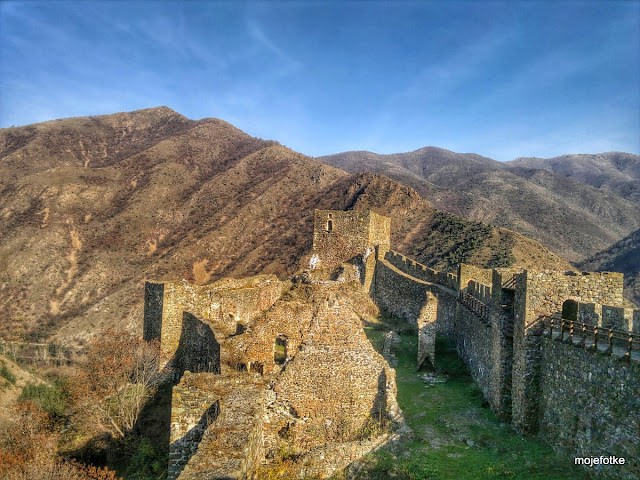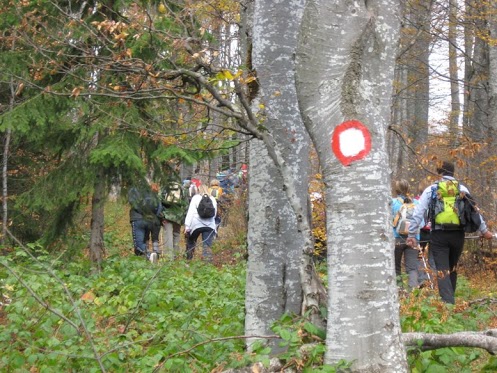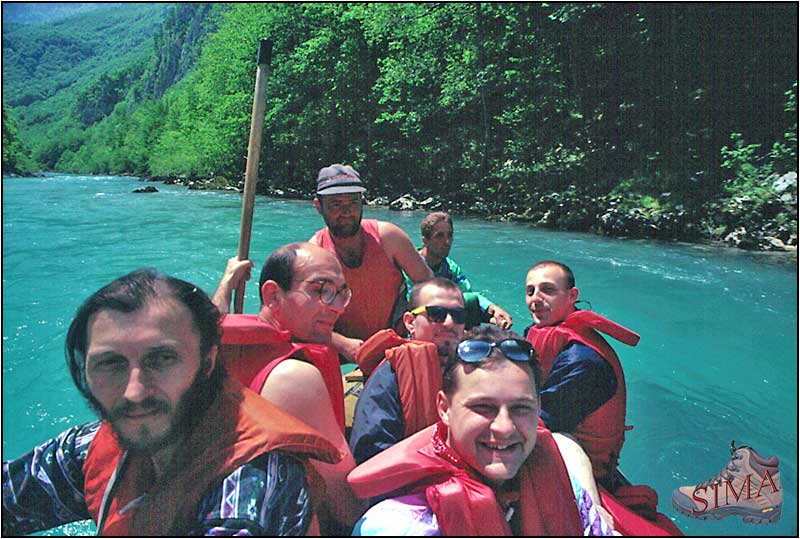St. Sava I - The First Archbishop of Serbia
In 1196, when Sava was 21 years of age, he received the greatest gift of his life: his father, Stephen Nemanja, decided to abdicate the throne ofthe Kingdom of Serbia and become a monk in Studenitsa Monastery on Mt. Radochelo in Rashka He took the name Simeon. To replace him on the Royal Throne, the Grand Zhupan appointed his second oldest son, Stephen, as the heir. This news thrilled Sava, as it was for him a spiritual blessing for his many prayers, ascetic efforts and even letters he had sent to his father urging him towards monastic life. Along with his father, Sava's mother Anna, on the same day—the Feast of the Annunciation, March 25, 1196—also received the monastic tonsure and was given the name Anastasia, retiring to the Monastery ofthe Holy Virgin in Kurshumlija near Toplica.
At his son's request, the monk Simeon-Stephen Nemanja, only a few months after his monastic tonsure, left Serbia and traveled to Vatopedi Monastery. There for the first time in three years he met his favorite child, Sava, who by this time was an experienced and well-respected monk.
Sava spent a little less than two years at Hilandar after his departure from Serbia (1217-1219). The moment he left, Serbia's situation worsened both domestically and internationally. The miracle-working oil exuding from the holy relics of his father Simeon stopped flowing. The people were outraged at King Stephen for driving Sava away. Under no terms would they accept the Pope's support and disavow Orthodoxy. As a result, Stephen wrote to Sava imploring him to return. Stephen also renounced his western ties and attempted to reconcile with the Byzantine emperor in Nicea, Theodore Laskaris (1204-1222).
Prior to his return, Sava traveled eastward to Nicea, the city where the Imperial Patriarch Manuel Sarantenos (1215-1222) resided, the highest ecclesiastical authority permitted to grant independence to a local Church. By granting autonomy to the Church of Serbia, Rome and the West's attempts to capture the Balkans could be thwarted. Also, the Archbishop of Ochrid was becoming too powerful; with independence granted to the Serbs, his power would diminish. The Serbian Orthodox Church, now independent, would remain under the direct jurisdiction of the Patriarchate.
Sava was consecrated in Nicea on the Feast of St. Nicholas, December 6, 1219, becoming the first Archbishop of the newly autonomous Orthodox Church of Serbia. He was 44 years old at the time.
In the spring of 1234, Archbishop Sava, age 59, only five years after his first trip to the Holy Land, decided to make a second pilgrimage to Jerusalem. This time he had particular goals in mind. He wanted to garner support for the Bulgarians who were seeking the ecclesiastical status of autocephaly. Previously, the Imperial Patriarch residing in Nicea had recognized this new situation in Bulgaria, but the Patriarchs of Jerusalem, Alexandria and Antioch had not followed suit. Sava also hoped to seek this same type of support from these Patriarchs in behalf of his own autonomous Serbian Orthodox Church. His mission was to promote the federation of Orthodox sister churches with Jerusalem as the eternal mother Church. There is no doubt that these ecclesiastical missions demonstrated a far-reaching and even prophetic insight on the part of Sava. For the Serbs, he was setting in motion something which would come about only one hundred years later—the autocephaly of the Serbian Church.
Due to the astute ecclesiastical wisdom on the part of Sava in 1219 in Nicea, the Serbian Church was able, in 1346, to obtain her own autocephaly, i.e., her own Patriarch. Political and economic life also flourished, following the example of the Christ-like Sava, in the centuries following his repose in the Lord. A unity among the Serbs, based on their adherence to Orthodoxy and maintenance of the political ideals of their beloved St. Sava, allowed them to develop into a Balkan power to the point that in 1346 the Serbian King Dushan the Powerful was given the title of "Emperor of the Serbs, Greeks, Bulgars and Albanians."
Due to the astute ecclesiastical wisdom on the part of Sava in 1219 in Nicea, the Serbian Church was able, in 1346, to obtain her own autocephaly, i.e., her own Patriarch. Political and economic life also flourished, following the example of the Christ-like Sava, in the centuries following his repose in the Lord. A unity among the Serbs, based on their adherence to Orthodoxy and maintenance of the political ideals of their beloved St. Sava, allowed them to develop into a Balkan power to the point that in 1346 the Serbian King Dushan the Powerful was given the title of "Emperor of the Serbs, Greeks, Bulgars and Albanians."





















































